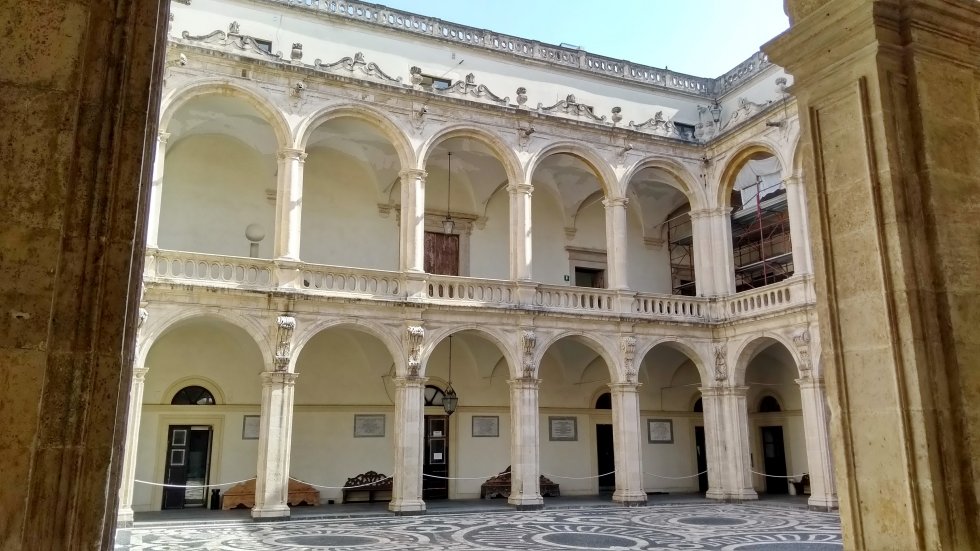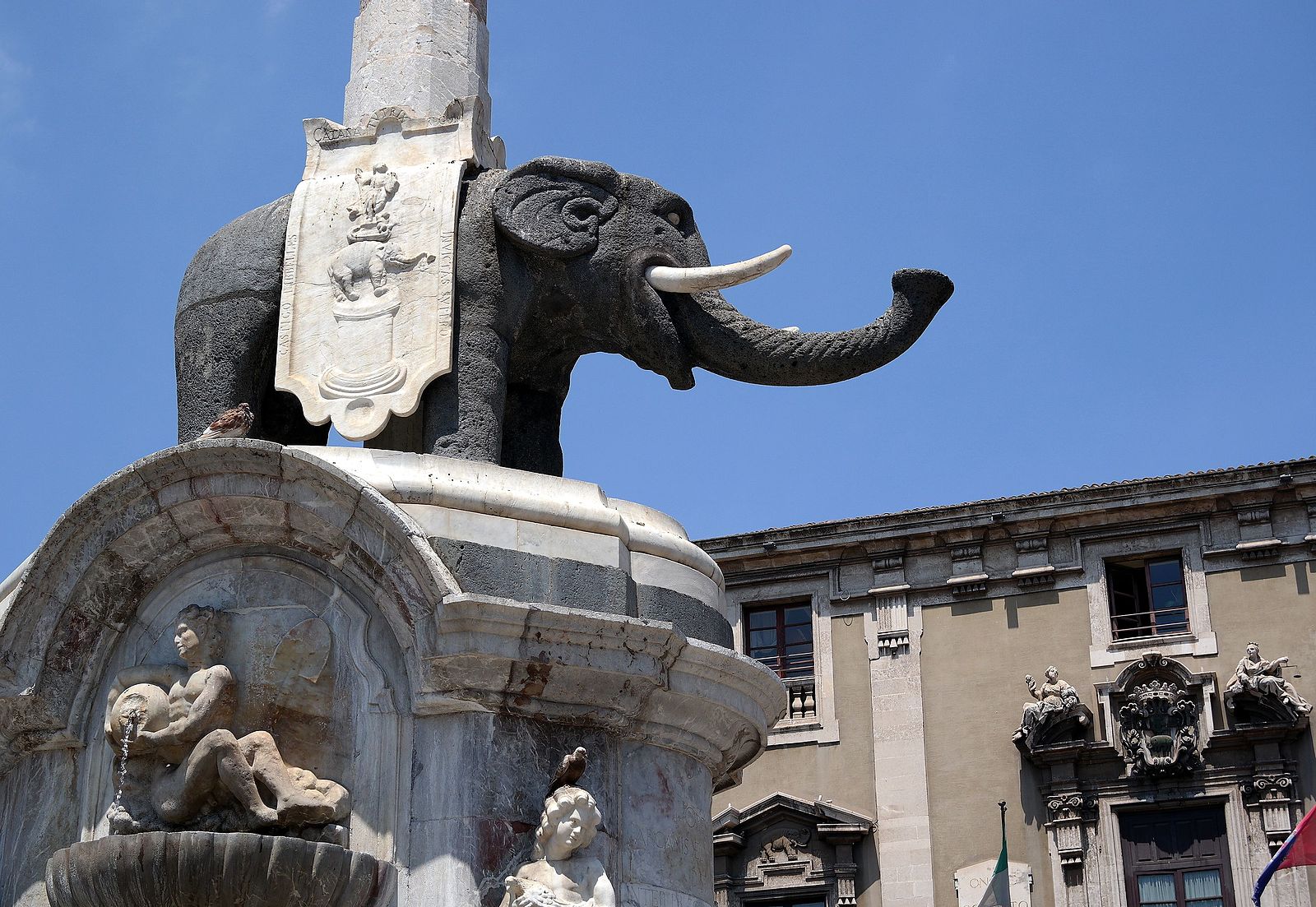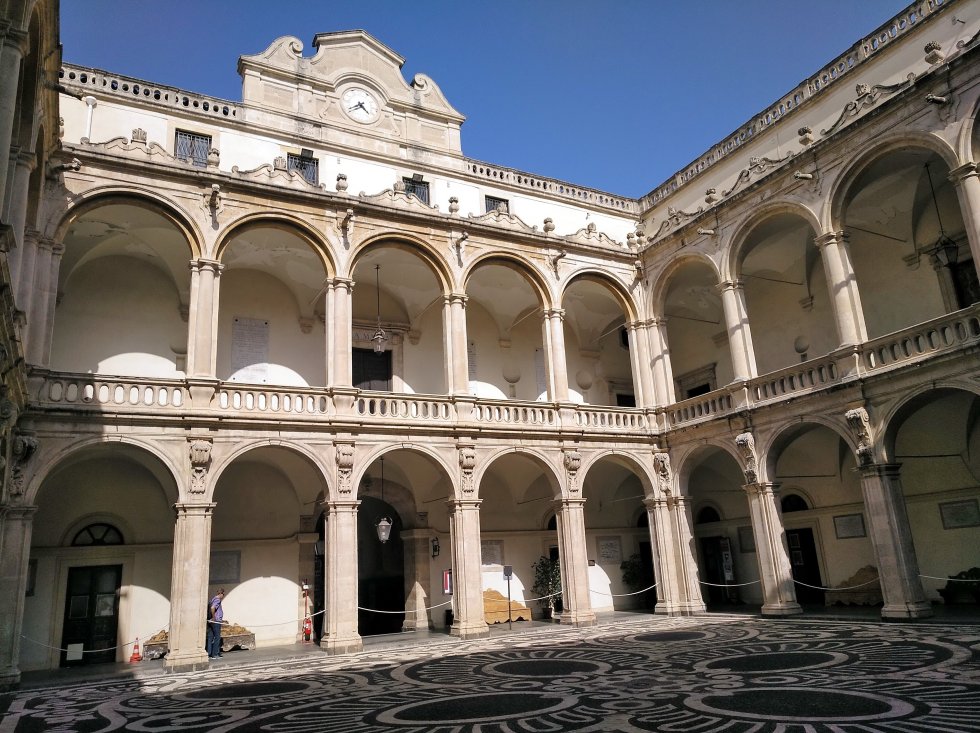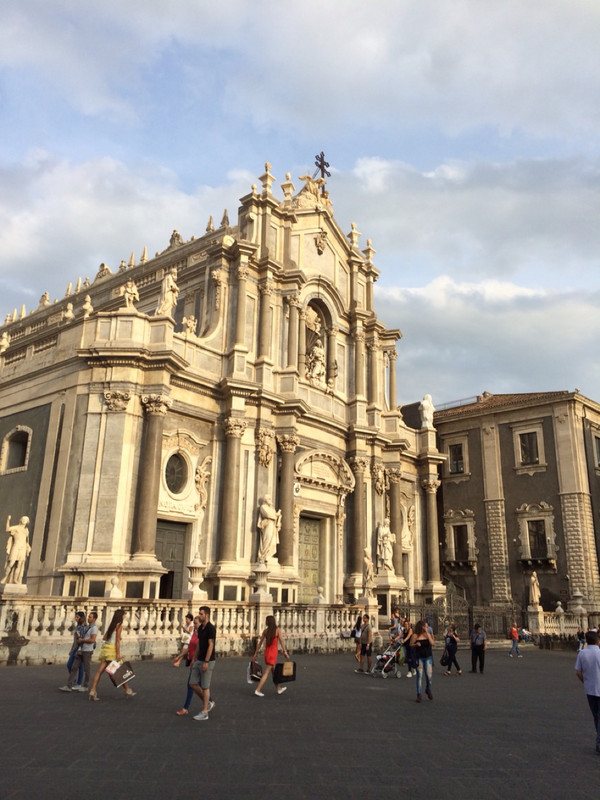
Giovanni Battista Vaccarini. Chiesa della Badia di Sant'Agata. Catania
Vaccarini designed the façade of the Cathedral (1730-68), the elephant fountain bearing an obelisk (1736- a motif also used by Bernini), and many other buildings in Catania, also completing the Town Hall in the Piazza del Duomo (1735). Later works, e.g. Palazzo del Principe di Reburdone (c. 1740-50) and the Collegio Cutelli (1748-54.

Palazzo dell’Università (1735) Giovanni Battista Vaccarini
Giovanni Battista Vaccarini (3 February 1702 - 11 March 1768) was a Sicilian architect, notable for his work in the Sicilian Baroque style in his homeland during the period of massive rebuilding following the earthquake of 1693. Many of his principal works can be found in the area in and around Catania.

Giovanni Battista Vaccarini. Chiesa della Badia di Sant'Agata. Catania
Giovanni Battista Vaccarini, the architect who designed many of the important buildings in Sicily's second city of Catania, was born on this day in 1702 in Palermo. He was responsible for several palaces, including the Palazzo del Municipio, the Palazzo San Giuliano and the Palazzo dell'Università.

Джованни Баттиста Ваккарини
The architects Girolamo Palazzotto and Giovanni Battista Vaccarini, who designed the façade of the cathedral, were responsible for the construction in the Sicilian Baroque.. G.B. Vaccarini completed the façade in the style of Sicilian Baroque in 1736. He used six ancient pillars which already adorned the ruined Norman cathedral.

The architect, Giovanni Battista Vaccarini, who played a central role
Catania. The most interesting museum at Le Ciminiere museum complex, Museo Storico dello Sbarco in Sicilia sheds light on the WWII Allied landings in Sicily. Exhibitions are comprehensive, using multimedia installations, historical artefacts, maps and photography to recount the island's liberation from Nazi occupation.

Giovanni Battista Vaccarini Urbipedia Archivo de Arquitectura
It is interesting to note his name is similar to the renowned 17 th Century Sicilian architect Giovanni Battista Vaccarini,. Italy, the multiple award-winning Giovanni Vaccarini Architetti - SINCRETICA srl architecture is a laboratory of research and experiments, focuses its research on reaffirming the primacy of 'ideas over form'. Dr..

Palazzo dell’Università (1735) Giovanni Battista Vaccarini
Palazzo degli Elefanti. Standing at the northern end of Unesco-lauded Piazza del Duomo, the 'Palace of the Elephants' is Catania's town hall. The building's eastern, southern and western facades were designed by baroque great Giovanni Battista Vaccarini. The northern side, however, is the work of his contemporary Carmelo Battaglia.

Giovanni Battista Vaccarini. Palazzo Valle. Catania. (Sicily) (dopo il
Giovanni Battista Vaccarini, inspired by the Bernini's Minerva Elephant placed in Rome, created this amazing fountain in 1736. At the base of the fountain there are two sculptures that represent the main rivers of Catania, the Simeto and Amenano, and above these you have the elephant with an Egyptian obelisk on its back.

Giovanni Battista Vaccarini. Chiesa della Badia di Sant'Agata. Catania
Our projects are closely collaborative, bringing a fresh perspective, inspiring confidence and building commitment. Since 1993 we have developed more than 450 design projects in 10 countries. We have received 20 Awards and nominations.. Designing is an art of listening.

IT, Catania, Palazzo dell'Università. Architect Giovanni Battista
The architect, Giovanni Battista Vaccarini, who played a central role in rebuilding Catania, Sicily after the devastating 1693 earthquake, was born on February 3, 1702 in Palermo. Although trained in Rome by Carlo Fontana, Vaccarini's architectural style is a synthesis of Baroque forms.

Giovanni battista vaccarini hires stock photography and images Alamy
English: Giovanni Battista Vaccarini (February 3, 1702 - March 11, 1768) was a Sicilian architect, notable for his work in the Baroque style in his homeland during the period of massive rebuilding following the earthquake of 1693. Many of his principal works can be found in the area in and around Catania.

Giovanni Battista Vaccarini. Cattedrale. Facciata (Facade) Catania (dal
The fountain was constructed in the 1730s by Sicilian architect Giovanni Battista Vaccarini, who appropriated the city's by-then legendary elephant as its centerpiece. Vaccarini draped a marble.

Giovanni Battista Vaccarini architect Italy On This Day
Giovanni Battista Vaccarini (3 February 1702 - 11 March 1768) was an Italian architect, notable for his work in the Sicilian Baroque style in his homeland during the period of massive rebuilding following the earthquake of 1693.Many of his principal works can be found in the area in and around Catania.

Giovanni Battista Vaccarini. Chiesa della Badia di Sant'Agata. Catania
Giovanni Battista Vaccarini (3 February 1702 - 11 March 1768) was a Sicilian architect, notable for his work in the Sicilian Baroque style in his homeland during the period of massive rebuilding following the earthquake of 1693. Many of his principal works can be found in the area in and around Catania. Giovanni Battista Vaccarini.

The architect, Giovanni Battista Vaccarini, who played a central role
After the 1693 Sicily earthquake raze the prior structure at the site, a palace was commissioned by the Marquise of San Giuliano, a member of the aristocratic Paternò family. The work was completed in 1738 under the designs of Giovanni Battista Vaccarini. The interiors have undergone much modification. The roof balustrade was added in the 1930s.

Giovanni Battista Vaccarini's Duomo facade (1736) Photo
Vaccarini, Giovanni Battista (1702-69). Prolific Sicilian architect, influenced by Borromini, Carlo Fontana, and (to a lesser extent), aspects of French Classicism then beginning to percolate into Italy. His appointment (1730) as City Architect of Catania heralded the introduction of Roman Baroque, as in his Church of San Giuliano (1739-57), derived from Carlo Rainaldi's Santa Maria in.